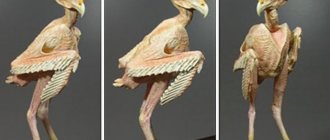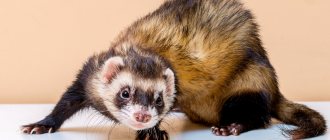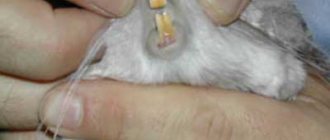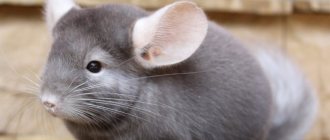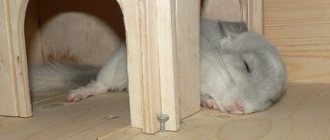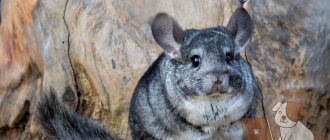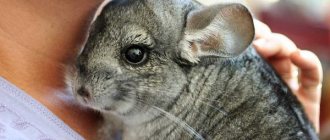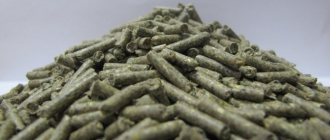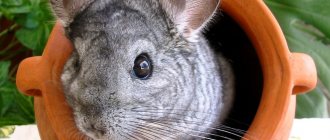For its beauty and unusually soft fur, the chinchilla is considered the most expensive rodent in the world. The owner of a cute face, funny ears and tail has established herself among breeders as an intelligent, good-natured and unpretentious animal.
The fur coat, as a source of pride for a chinchilla, is a layer of tight and very delicate fluff that prevents the animal from freezing in the most severe frosts. The chinchilla is rightly called hypoallergenic , which makes it possible for a person suffering from attacks of fur intolerance to choose a rodent as a pet.
Causes of chinchilla shedding
Typically, chinchilla breeders do not have any difficulty keeping or caring for these furry rodents. Chinchillas, by nature, are clean animals, very cute in appearance, they have no foreign odors, much less unpleasant odors, if the animal is healthy.
The chinchilla does not leave its fur anywhere, like cats or dogs, for example, which is undoubtedly an advantage, but this is precisely what leads many to believe that chinchillas do not shed at all.
The process of fur renewal is a natural process. If the animal is healthy, and its diet is balanced and corresponds to the basics of a healthy diet for this breed, then up to 20 hairs fall out per day, which is why the process of changing fur is almost invisible. But if you don’t clean your pet’s home for a couple of days, you may notice fallen hairs on the floor or among the bedding.
Also, during growing up, there is a change in fur: the child's undercoat changes to adult hair, this is called juvenile molting, and this is normal. This period is characterized by profuse hair loss. However, there are a number of reasons that can cause problems that affect hair loss, including:
- stress;
- dermatological diseases;
- nutritional disorder (poor, unbalanced, vitamin deficiency);
- violations of maintenance and care rules;
- lack of attention.
Allergy
If the body is hypersensitive to various irritants, the following symptoms can be observed in an animal:
- conjunctivitis;
- inflammation of the eyelids;
- lacrimation;
- sneezing;
- dyspnea.
An allergic reaction accompanies the following situations:
- switching from one type of feed to another, this applies to both ready-made mixtures and those prepared by the owner (dusty hay);
- bedding materials;
- hygienic sand for bathing chinchillas;
- an allergic reaction to toxic substances released by internal parasites.
Conjunctivitis in chinchillas
Stress
Having experienced any stressful situation, the animal may experience excessive hair loss. Chinchillas, like other rodents, can experience stress during moves, changes in the form of new people or objects, some even to the death of other pets. If the cause of hair loss is stress, the hair often falls out in large clumps. And in a short period of time, bald patches can form.
It’s easy to cope with this - just organize peace and a calm environment, pay attention and show love towards your pet, you can pamper it with goodies more often, be sure to watch your speech - do not shout or show dissatisfaction. With this behavior, hair loss stops within a couple of days.
Shedding fur
Shedding fur should not be confused with the natural process of shedding.
A chinchilla should shed slowly and regularly. Therefore, if a chinchilla is completely bald, perhaps something has frightened it very much.
Rapid fur release is a defense mechanism used when a chinchilla feels trapped or threatened. Animals often use this in the wild, for example if a chinchilla is caught by a predator. But pet chinchillas can also shed fur if they are in a stressful situation.
Shedding fur is also a natural process and should not cause much concern to pet owners. If your hairless chinchilla is feeling normal, carefully inspect all exposed areas of his skin. You don't need to go to the vet or treat the bare skin area unless it starts to look painful.
Avitaminosis
Vitamin deficiency can provoke molting in the spring or winter, because during these periods the lack of essential vitamins is especially acute. If hair loss began as a result of vitamin deficiency, then it tends to fall out in clumps, and bald spots are noticeable on the animal’s body. Bald skin appears red and may itch.
Adding special vitamins for rodents or fresh vegetables and fruits to the food will help eliminate this problem. Experts recommend giving vitamins in a course for two weeks, but the main thing is not to exceed this period, since an excess of vitamins is even worse than their deficiency.
Fur chewing
Quite often, chinchillas chew out their fur with their teeth, which is why they look disheveled and sloppy. In addition, these animals are not averse to ruffling their neighbor’s fur. The exact reasons for this phenomenon are unknown, but chinchilla fur is believed to be chewed out for the following reasons:
- stress;
- such behavior is often observed in emotionally unstable and nervous animals and is inherited;
- pregnancy and breastfeeding cause hormonal stress in the female, and also cause a lack of vitamins in the body;
- unbalanced diet and poor quality feed;
- high room temperature;
- illness;
- lack of attention and boredom.
Fungi
Chinchillas, like people, are susceptible to trichophytosis and microsporia, or, in simple terms, lichen. Ringworm is manifested by the formation of oval or round spots, which are palpable and raised above healthy skin. It is important to remember that lichen is an infectious disease, and a person can become infected from a sick animal. Therefore, it is very important to start timely treatment. If red spots appear, increased shedding and scabies, you should immediately visit a veterinarian.
Treatment involves complex therapy. Depending on the degree of the disease, different means are used: from tablets to intramuscular injections.
The doctor will prescribe treatment, which includes ointments and solutions for sanitation of the dermis:
- Lamisil is an antifungal.
- Exoderil is an antifungal.
- Clotrimazole is an antifungal.
- Nystatin. – wide spectrum, against many fungi.
- Medical sulfur.
- Chlorhexidine is an antiseptic.
If you apply in time, treating the skin with ointments and solutions will be sufficient; if the disease is advanced, additional treatment with tablets may be prescribed.
A vaccine has also been developed, which must be given two or three times (depending on the dose) with a break of about 10 days.
Dermatitis
Skin diseases cause unbearable suffering to cute animals. To get rid of the itching, they rush around restlessly, scratch with blood and quickly lose a lot of hair.
The cause of dermatitis is impaired metabolism, intolerance to dietary components, and pathogenic fungus. If a disease is detected, you cannot treat it yourself. It will be prescribed by a veterinarian after a complete examination.
Often hair falls out due to allergies
Other Causes of Excessive Shedding in Chinchillas
Diet disorders
Poor nutrition or an unbalanced diet for your pet can cause hair loss, for example, eating only food without fruits and vegetables. Expensive food is not a guarantee of proper nutrition; it will not be a complete replacement for the minerals and vitamins found in plant foods. Replacing or supplementing your diet will easily correct the situation.
It is important to remember that the change of food should be smooth; a sudden change can cause digestive disorders. In addition to vegetables and fruits, you can give your chinchilla leaves of berries or fruit trees for proper nutrition.
Violations in care and maintenance
Maintaining the required temperature for chinchillas is a very important factor, because these rodents can die from extreme stuffiness or heat, as well as from high humidity. According to experts, for a chinchilla to live comfortably, the temperature should be +15-20 C; a temperature of +25-27 C can have a detrimental effect on the health of the rodent. If the temperature is above 25 C in the room where your pet lives for several days, hair loss may occur followed by baldness; the skin in these places is hyperemic and dry. It is easier to prevent such problems than to solve them later.
To avoid this, you should place your chinchilla’s home away from:
- batteries;
- heaters;
- It is unacceptable to place the cage on the windowsill.
These rodents tolerate cold well, so in winter, even at temperatures below +15C, additional heating is not required. And if you live in cities where the temperature is very hot, in the summer you need to decorate the cage with a fan or install the home in a room where an air conditioner is installed.
Diseases
Any disease affects the appearance of the animal - the fur gets wet, the hairs become brittle and fall out profusely. If such symptoms appear simultaneously with discharge from the eyes, ears, mouth, nose, etc., this is a reason for a careful examination and identification of the disease. Most often the gastrointestinal tract suffers from:
- Diarrhea. The reason is overexcitement, bad water or moldy food. Treat with herbal infusions (calamus, wild rosemary) and phthasol with charcoal. If treatment is unsuccessful, biomycin or tetracycline is given (the dosage is determined by the veterinarian).
- Constipation. The reason is infection, lack of water, stress. If the abdomen is hard and there are no signs of bowel movements, a laxative, plenty of fluids and juicy fruits should be given.
- Gastroenteritis. The intestines and stomach are inflamed due to poor nutrition or a sudden change in nutrition. Treat with rosehip decoction and a balanced meal.
The animal will have bad fur and will stop moving due to diseases of the genital organs, mammary glands, malocclusion, bad teeth, jaundice, and cystitis. Only a professional can handle such serious diseases.
A chinchilla can gnaw its own fur.
What vitamins are recommended
- K: production of bone protein - a source of calcium for teeth and bones;
- E: regulation of reproduction, regeneration process, muscle fiber and neuron health, wound healing and blood clotting;
- H: chemical synthesis of ascorbic acid for growth;
- C: oxidation processes, removal of metabolic products, absorption of calcium and iron, elasticity of veins, antiallergic effect, elimination of stress;
- D: absorption of calcium, minerals and phosphorus, formation of teeth and claws, normalization of blood pressure;
- A: constant renewal of skin cells, neurons, bone tissue, natural development of the chinchilla embryo, helping the immune system;
- B2: replenishment of blood cells and proper metabolism;
- B1: improved lymph circulation, hemoglobin synthesis, proper fermentation, growth and development of the body, high activity, good learning ability;
- B6: removal and breakdown of protein used by cells, construction of new neurotransmitters and amino acids;
- B5: absorption of necessary substances, formation of antibodies, biosynthesis of neurotransmitters and glucocorticoids;
- B9: metamorphosis and formation of protective and circulatory systems, cell development and growth, synthesis of nucleic acids;
- B12: Reduced hypertension, improved health, improved organ function, good functioning of the hematopoietic glands, stable reactions and increased curiosity.
Hair transplantation
In the second stage of the procedure, donor follicles are implanted into bald areas. For replanting, a special micro-instrument choi implanter is used with a needle thickness of 0.5-0.9 mm, selected so that the diameter of the instrument matches the size of the transplanted material.
Before implantation, the length of the follicle is measured using a microscope. Based on the data, the length of the implanter needle is adjusted, after which the follicles are implanted into the skin. Thanks to a special tool during transplantation, you can control the direction and angle of hair growth. These parameters are individual for patients and must be observed during transplantation. Where there is hair on the skin, grafts are placed parallel to their growth; if there is no hair, the natural direction is restored.
In addition, it is important to ensure that the hair has a natural thickness. Therefore, when transplanting, grafts with different numbers of hair follicles are used.
For example, one bulb is implanted along the edge of hair growth. Next, material with two or three follicles is implanted.
After transplantation, the transplantation area is treated with a special solution, which activates engraftment and hair growth.
Zubov
Malocclusion
This disease affects many chinchillas. Malocclusion is a hereditary disease.
Animals with this pathology are not suitable for breeding. A fluffy dog with this defect is characterized by poor appetite, long eating times, and lack of weight. The flaw causes the pet to prefer small pieces of soft food
It is important to visit a veterinarian regularly, otherwise an advanced form of the pathology will cause the chinchilla to yawn, cause drooling and scratching of the face
Abnormal tooth color
These organs of a healthy animal are distinguished by a dark yellow tint. If the color scheme of the teeth approaches white, then the animal’s body is exhausted from a lack of potassium and phosphorus.
It is important to add foods rich in these microelements to your fluffy’s diet. Often the wrong color is a genetic feature
Chinchillas with this defect are not bred.
Hooks on teeth
Sometimes the root organs in a rodent's mouth are positioned incorrectly. Because of this, hooks form on the teeth, which grow inward and injure the tongue. The defect is accompanied by regular drooling. It is impossible to cure an animal at home; veterinarian intervention is required.
Matching
The time for mating of rodents is selected taking into account the age of the female and male. Sexual maturity in females begins at six months of age. For a female of this age, the partner must be three months older. And for an individual older than a year, it is better that the male is several months smaller. But this is not the main thing in choosing a couple. Important conditions in choosing partners for mating:
- it is necessary to have the same breeding characteristics;
- be from a purebred breed with good genetics;
- have good health;
- have fur of the same color and quality;
- do not create related pairs until the third generation.
The minimum estrus cycle for a female is 20 days
Soft bag
Fabric carriers have been around for a long time, but their modern development has primarily affected the increase in the number of all kinds of windows, mesh and other little things. The cat will no longer sit in a dark bag, not much different from an ordinary travel bag. It is difficult to organize a comfortable long trip in such a device. But for short distances the convenience is quite adequate.
The advantage of a soft cage is its lightness, compactness, and the ability to securely attach it to a car seat or, for example, to the handle of a suitcase.
Negatives: Not hygienic for long trips and difficult to clean quickly (although they can withstand washing in a regular washing machine).
Cost – 1,360 – 1,489 rubles.
What medications are recommended?
Special vitamins can be bought at the pharmacy. They are divided into the following groups:
- Fat-soluble liquids. They are administered to animals one drop at a time from a dropper or disposable syringe.
- Soluble in water: “Vita Sol” (), “Vitamin Plus N”. () and others. They are added to drinking water. Since their structure quickly deteriorates when exposed to sunlight, it is best to add them to water in the evening.
- Powder: Vitamix and Vitapol. They are mixed with bran, dry food, dried and crushed grass;
- tablets “Ascorbic acid” and “Ascorutin”;
- Vitamins for children: Biovital Kinder gel and Multitab baby. Chinchillas love the sweet taste of these vitamins.
The course of fortification lasts 30 days, followed by a break and repetition if necessary.
Vitamin complexes and mineral supplements
Hair loss causes and treatment - all this interests people who are faced with baldness. As already mentioned, hair loss in women, like men, can be stopped using an integrated approach. The treatment uses both medications against hair loss and vitamin complexes.
One of these vitamin preparations with effective action is Tricologic, which contains Keraton TM. This complex includes:
- amino acids that activate keratin production;
- para-aminobenzoic acid;
- extracts of valuable plants;
- vitamins E, C;
- pantothenic acid;
- iron;
- beta-carotene;
- selenium;
- vitamin elements of the B group.
The vitamin complex is taken orally and delivers valuable substances to nourish hair through the blood, directly to the follicles. Thanks to the presence of vitamins E, C, beta-carotene, free radicals are blocked, aging and hair loss are slowed down.
The complex is also useful thanks to:
- Vitamin A helps normalize sebum production and restore skin health;
- vitamin E actively restores the functionality of processes occurring in tissues;
- Vitamin C helps in the formation of connective tissue;
- vitamin B elements are necessary for proper division and growth of cells, including those located in the follicle matrix;
- biotin normalizes metabolism and gland secretion;
- para-aminobenzoic acid is necessary to maintain natural hair pigmentation;
- pantothenic acid is needed to maintain healthy hair;
- silicon helps maintain hair elasticity;
- minerals such as zinc, iron, chromium, copper, etc., support the health of hair shafts and follicles, nourish cells, and improve metabolism.
Treatment of hair loss can be carried out using other vitamin complexes, for example Tallium-plus, Revalid, Aurita, Perfectil
It is important that the body, during active hair loss, receives a sufficient amount of nutrients and minerals necessary to improve health and improve the functionality of all processes occurring in the tissues.
Lack of attention
Another reason for the appearance of bald patches and hair falling out in clumps is gnawing out the fur. This reason cannot be attributed to molting, since baldness is caused by mechanical damage. However, gnawing out fur is a fairly common occurrence in animals that are not given enough attention or that are kept in cramped and small cages. The emergence of a bad habit is caused by ordinary boredom.
And the fur of the animal very often looks as if tufts of wool were pulled out of the skin. It is quite easy to cope with this problem - pay more attention to your pet, move the animal into a more spacious cage, install new toys or labyrinths, or buy a pair.
Source
